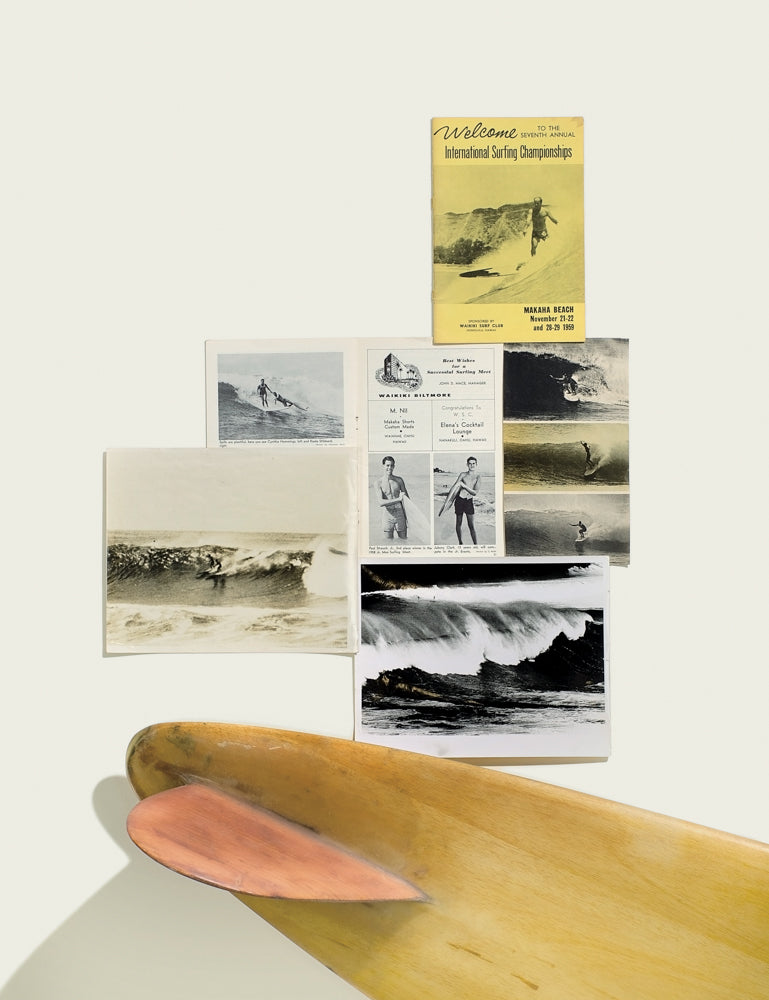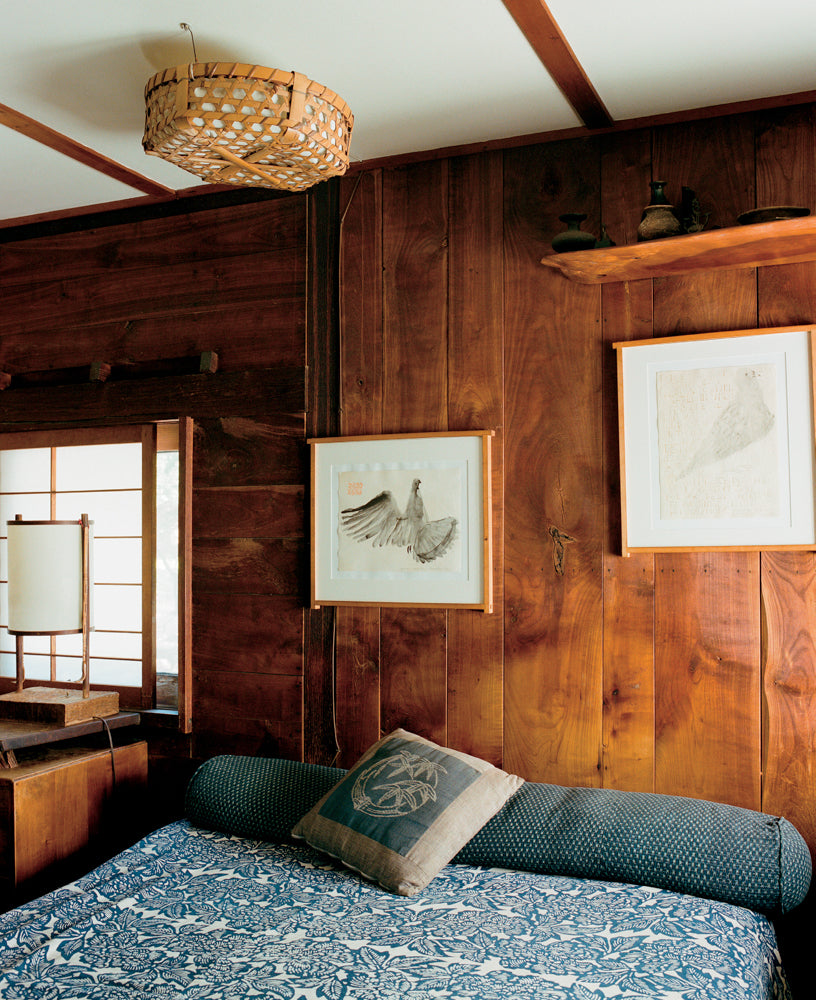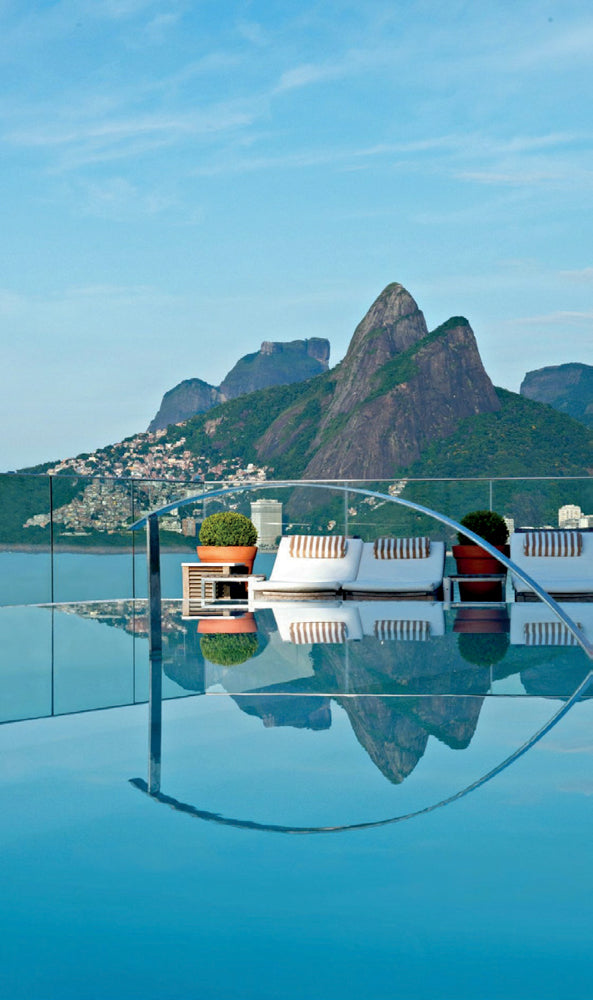
M. NII
M. NII


The mom-and-pop tailor shop that invented modern surfwear
In the early 1950s there were a few thousand surfers on the entire planet, tops, mostly in Hawaii and California, with the remainder sprinkled in small clusters here and there. If you were one of them, you probably picked up the habit during an R&R in Waikiki while stationed in the Pacific. Or maybe, earlier yet, Duke Kahanamoku visited your beach and left a wooden plank behind that was passed around and copied. You certainly weren’t reading about it in the papers.
If American society noticed surfers at all, it lumped them in with beatniks, artists, and other marginal life forms that ignored its rules and lived off the cuff; more interested in producing endorphins and surf knots than airplanes and automobiles. How could they waste their time playing in the ocean? How did they make a living? Raise a family? As the mindless minions raced down the Pacific Coast Highway to their workaday jobs, surfers were paddling off at 90 degrees to the postwar work ethic, aiming for the bigger sets, and then, over the horizon — Hawaii.
For mainland surfers, Hawaii was Mecca with warm waves and a laid-back lifestyle, and their goal was to get there and wallow in it. The simple joy of Waikiki’s comfortable spindrift combers was enough for most, but Makaha, on the west side of Oahu, was where a few found life’s calling. A huge rolling point wave that could jack up to over 20 feet high, it demanded everything a surfer and his board could muster. Since the late 1940s, guys who had a stomach for such risk had been trickling in from near and far, drawn by the coconut telegraph or perhaps a grainy B&W sent by a friend, to see for themselves if they were up to it. Some made the drive out from town when the surf was up. A few found acceptable shelter, as near to Makaha as possible, in old cane shacks and WWII Quonset huts, living simply and entirely by their own design.


By day, they surfed and dove and absorbed the ocean’s survival lessons, one pummeling at a time. By night, they drank fermented “pineapple swipe” (so called because they were stolen from the fields) and talked big wave theory. How big was possible? What kind of board would you need? Where were the best lineups for each break? Can you stay under for more than one wave? They were like astronauts recapping their first steps on the moon.
Before the war, while the western world went swimming in tight “balboa” bathing shorts or old men’s elastic-waist boxers, some surfers ordered from Lyn’s, a tiny Waikiki seamstress shop that made belted-waist trunks. Elsewhere, guys raided overstocked military surplus stores for 25-cent khakis and cotton sailor pants, which they cut off just below the knee to protect from the abrasive paste of sand and wax on the decks of their boards. After the war, when Makaha was discovered, they started going to a rickety Japanese tailor shop they’d been driving past on the road from Waikiki. The shop was called M.Nii Tailor, after its proprietor, Minouri Nii, a one-leg Japanese immigrant who manned the shop with his wife, Florence, who was also an amputee.
Before surfers started showing up on their doorstep in the late 1940s, the Niis catered to the local market, sewing work clothes for the cane field cutters, band uniforms for high school kids, and custom formalwear for weddings, funerals, and luaus. Surfers were now stopping to order custom surf trunks and make alterations to their existing pairs. The Niis began developing the low-slung, open legged, rear-wax pocketed trunk pattern that would eventually serve as the foundation for today’s $9 billion surfwear industry. They named their refined surf trunk the Makaha Drowner and every pair of surf trunks since has benefited from its innovations.


I landed in Honolulu in July of 1962 with three surf buddies, 25 bucks, and a brown paper bag stuffed with a couple of T-shirts, a pair of shorts, and a pair of trunks made by Mrs. Reed, wife of the Newport Beach lifeguard captain, who sewed out of her beachfront home. You still couldn’t buy real surf trunks off the rack in those days; in California you had to order custom from one of the few surfer moms who were, by then, copying the M.Nii style.
Word was, it took the Niis a while to finish each pair. You needed to order right after you arrived so you’d have them in time to wear before you left. I’d heard of guys going back and forth to Hawaii season after season without ever getting a finished pair, and wanted to make sure I got mine. A few days after we landed, my buddies and I drove out to Waianae and found the Nii’s shack sitting lopsided on stilts next to a plate lunch drive-in. When we walked in, Mrs. Nii greeted us and immediately started measuring: waist, inseam, leg length and circumference, wax-pocket positioning (rear or side), flap or button closure. I ordered mine in solid navy with bright orange lining the inside of the waistband and the right-rear wax pocket flap.
While waiting on the other guys, I read through the framed order forms cluttering one of the walls. There was a receipt and autographed photo from actor Richard Boone, star of the TV show Have Gun-Will Travel, and orders from Hollywood Rat Packers Peter Lawford and Frank Sinatra. Hanging next to Lawford’s order was one from his brother-in-law, President John F. Kennedy.


I had heard the rumors of President Kennedy and Marilyn Monroe, and seen pictures of Monroe, back when she was still Norma Jean, at a beach party with Pete Petersen, Tom Zhan, and the Malibu gang. As I absorbed the framed orders, it all started falling into place. Lawford, a full member of the Malibu pit crew, knew they were going over and had clued Frankie and Mr. Kennedy in about how and where to get the cool stuff. I could imagine the limos pulling up out front. Or maybe they came out and got the Niis, brought them up to the Presidential Suite at the Hale Kalani. Secret Service, the whole deal.
Once a week for a month or two, we’d drive over from the North Shore to check the surf at Makaha and our trunk orders — no pressure, mind you. Each time, Mrs. Nii fished them out of her four-foot pile of pinned-but-not-yet-sewn orders, flashed her three-tooth smile, and told us they’d be “ready come pick up” next week. And then, finally, they were.
Come the following spring, my flight home was the next day and I was hoping to leave with the two pairs of M.Niis I had ordered months back — a pair of trunks and a pair of corduroy walk shorts. When I got to their shop the afternoon before my departure my order was still buried in the cut-and-pinned pile, so I white lied and told Mrs. Nii that my flight was that night. I needed to get to the airport in time to buy some leis. Could she finish my shorts pronto? Sensing my distress, she handed me a long lei needle and string and pointed me to the backyard to pick plumeria blooms from their tree. As she worked her sewing machine, turning my trunks this way and that, I sat on the floor stringing the most fragrant blossoms I have ever smelled.


It’s hard to imagine now, but there was almost no surf-related media in the 1950s aside from rough-cut, early 16-millimeter movies, small cult screenings of which were popular on the mainland. Big waver Greg Noll, a clever natural born promo guy, made a few and was in most of the others that came along. So he went to M.Nii and ordered up a design that would be unmistakably his: large black-and-white stripe “jailhouse trunks,” which became his trademark. In 1957, he wore them on the historic first day that Waimea Bay was ridden. Ironically, that day signaled the beginning of the sport’s transition away from Makaha’s “old school” wave to the numerous new breaks on the North Shore. In fact, by the time I arrived at the Nii’s shop in ’62, their surf trunk business was suffering. No one’s quite sure of the exact date, or the final straw, but M.Nii would close for good before the end of the 1960s.
Fifty years after M.Nii created the iconic Makaha Drowner, two surf industry vets, Randy Hild and John Moore, hooked up with business partner Ramez Toubassy to repay some long overdue chops to M.Nii by reviving that classic label and the quality and function it stood for. Explains Hild: “We brought M.Nii back because we saw no one else providing that unique, very rare authenticity that you can still find in the surfing community. Somewhere over the last few decades it became more the sporting goods garment business, with big logos and corporate sponsors, than purpose-designed trunks made for surfing. That little tailor shop in Makaha predated all this stuff. Back then it was about guys chasing waves and girls, and showing a little style. Smooth, clean, functional style was what surfing was all about. That’s the vibe we missed.”



